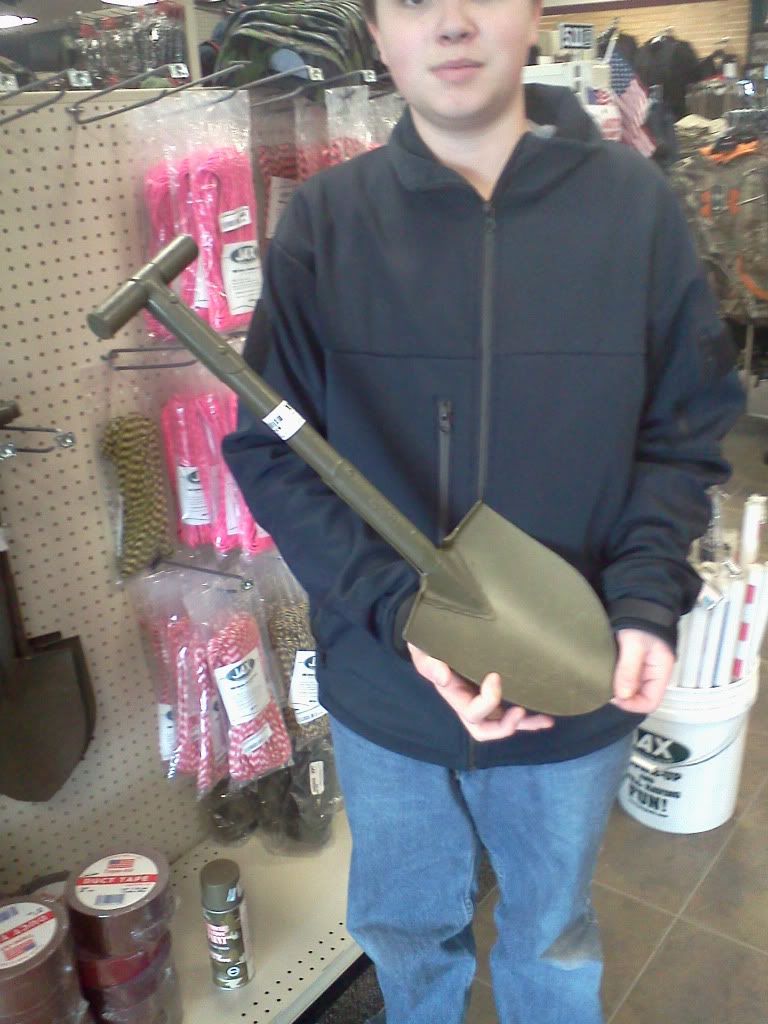I did a little digging (yeah, I know, bad pun,

) and it seems the folding blade entrenching tool was the M1943 entrenching tool.
Couvi mentioned the t-handle entrenching tool, and I've also seen photos of those in use during World War Two, and I had it dimly in mind that they were the standard in WWI. But I can also recall a Mauldin cartoon with one of his soldiers using the folding spade tool. Mauldin is actually a really good source for items in common use by troops in the ETO, as he was amazingly accurate in what he depicted, based exclusively on what he was actually seeing, so the M1943s must have been in relativity common circulation in the ETO. He also depicts the t-handle shovel in use.
According to what I was reading, the pick variant was a 1945 production tool. It looks handy, and I wonder why that hasn't carried on to the modern e-tool?
Apparently the original carrier was the M1943 carrier, but a new carrier came in as Couvi notes.
OliveDrab.com has an article about e-tools, but their article claims the pick feature was added in 1951.
http://olive-drab.com/od_soldiers_gear_intrenching.php
They also identify the earlier pattern as the M1910, which I think I have seen discussed elsewhere. Indeed, I think we have an old e-tool thread up here, but I couldn't find it.
They also discuss the M1943 carrier and note that the new carrier was the M1956. The current pattern is the M1967.
Here's a wartime poster featuring the t-handle entrenching tool:

I suppose the M1910, which of course was used throughout WWII, would be the only pattern we'd expect to find in use, if we would expect to find it in use, for late pattern cavalrymen. As we have discussed elsewhere on the forum, some thought was given to digging implements to be used by late period cavalrymen, although I don't know that this would have included the M1910 e-tool in any fashion.
The one source I read claimed that the M1943 pattern was based on a German e-tool, but every WWII German e-tool I've ever seen a photo of was simply a very short spade with a somewhat square blade. These do not fold. That pattern was carried on, like many WWII German patterns, into post war East German service and I've seen them for sale fairly recently in surplus stores.
As a total aside, but perhaps swinging back to the topic of the site, anyone who has been to Little Big Horn has seen the rifle pits there. I also know of a place in the Big Horns where cavalrymen dug rifle pits, which are also still visible. Its amazing to think that these troopers were digging their pits with knives, plates and, if they were lucky, shovels. Digging in most Western locations is very difficult, and it's often struck me how hard it must have been to have done that.








